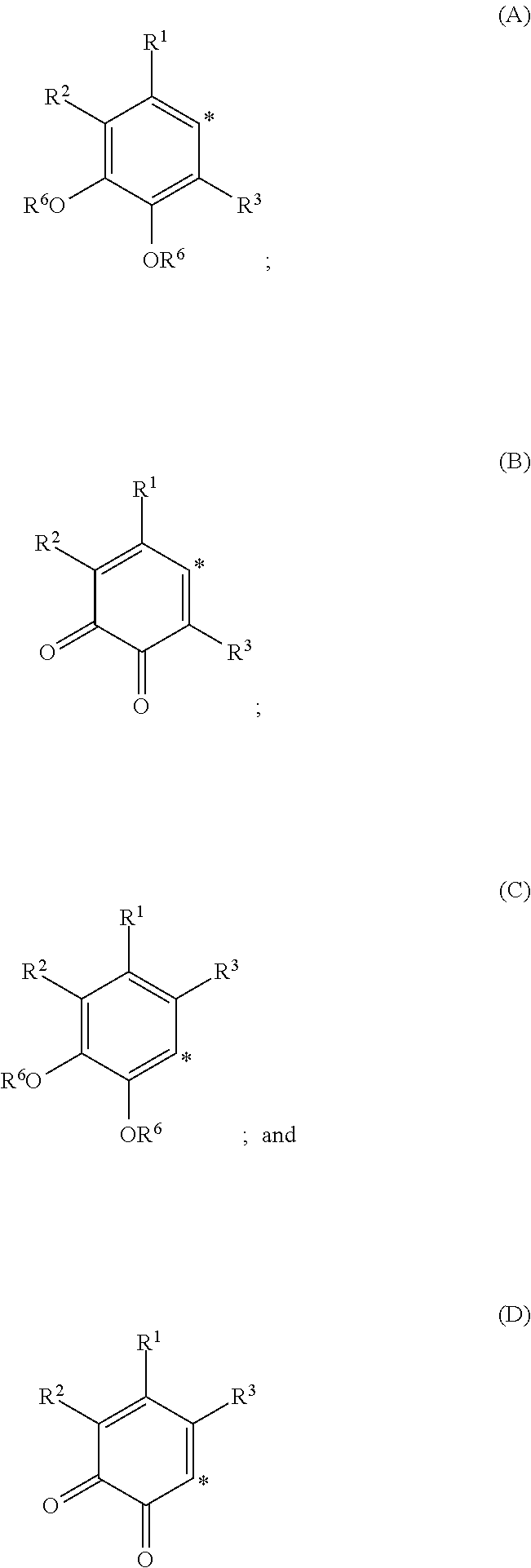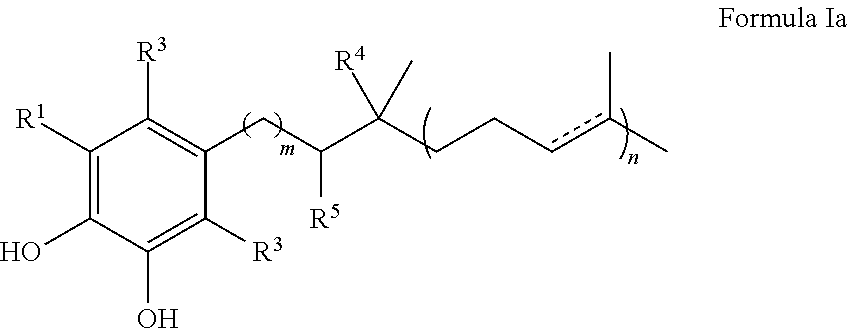Catechol derivatives for treatment of oxidative stress diseases
a technology of oxidative stress disease and derivatives, applied in the field of catechol derivatives for treatment of oxidative stress diseases, can solve the problems of cell damage and cell death, oxidative damage to the cellular structure and machinery, and the rate of damage to the cell membrane exceeds the capacity of systems which control or repair, so as to and enhance one or more energy biomarkers
- Summary
- Abstract
- Description
- Claims
- Application Information
AI Technical Summary
Benefits of technology
Problems solved by technology
Method used
Image
Examples
example a
Screening Compounds of the Invention in Human Dermal Fibroblasts from Friedreich's Ataxia Patients
[0228]An initial screen was performed to identify compounds effective for the amelioration of redox disorders. Test samples, 4 reference compounds (idebenone, decylubiquinone, Trolox and α-tocopherol acetate), and solvent controls were tested for their ability to rescue FRDA fibroblasts stressed by addition of L-buthionine-(S,R)-sulfoximine (BSO), as described in Jauslin et al., Hum. Mol. Genet. 11(24):3055 (2002), Jauslin et al., FASEB J. 17:1972-4 (2003), and International Patent Application WO 2004 / 003565. Human dermal fibroblasts from Friedreich's Ataxia patients have been shown to be hypersensitive to inhibition of the de novo synthesis of glutathione (GSH) with L-buthionine-(S,R)-sulfoximine (BSO), a specific inhibitor of GSH synthetase (Jauslin et al., Hum. Mol. Genet. 11(24):3055 (2002)). This specific BSO-mediated cell death can be prevented by administration of antioxidants or...
example b
Screening Compounds of the Invention in Fibroblasts from Huntington's Patients
[0238]Compounds of the invention are tested using a screen similar to the one described in Example A, but substituting FRDA cells with Huntington's cells obtained from the Coriell Cell Repositories (Camden, N.J.; repository number GM 04281). The compounds are tested for their ability to rescue human dermal fibroblasts from Huntington's patients from oxidative stress.
[0239]Compounds of the present invention are considered active if they exhibit protection against Huntington's with an EC50 of less than about 500 nM.
example c
Screening Compounds of the Invention in Fibroblasts from Leber's Hereditary Optic Neuropathy Patients
[0240]Compounds of the invention are tested using a screen similar to the one described in Example A, but substituting FRDA cells with Leber's Hereditary Optic Neuropathy (LHON) cells obtained from the Coriell Cell Repositories (Camden, N.J.; repository number GM03858). The compounds are tested for their ability to rescue human dermal fibroblasts from LHON patients from oxidative stress.
[0241]Compounds of the present invention are considered active if they exhibit protection against LHON with an EC50 of less than about 500 nM.
PUM
| Property | Measurement | Unit |
|---|---|---|
| Pharmaceutically acceptable | aaaaa | aaaaa |
| Energy | aaaaa | aaaaa |
| Stress optical coefficient | aaaaa | aaaaa |
Abstract
Description
Claims
Application Information
 Login to View More
Login to View More - R&D
- Intellectual Property
- Life Sciences
- Materials
- Tech Scout
- Unparalleled Data Quality
- Higher Quality Content
- 60% Fewer Hallucinations
Browse by: Latest US Patents, China's latest patents, Technical Efficacy Thesaurus, Application Domain, Technology Topic, Popular Technical Reports.
© 2025 PatSnap. All rights reserved.Legal|Privacy policy|Modern Slavery Act Transparency Statement|Sitemap|About US| Contact US: help@patsnap.com



